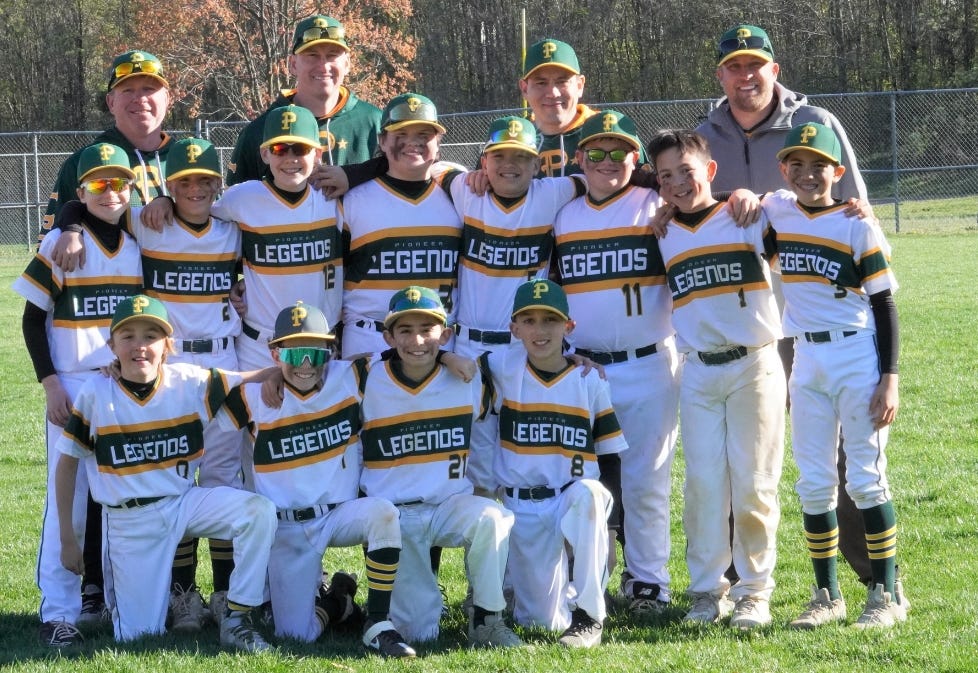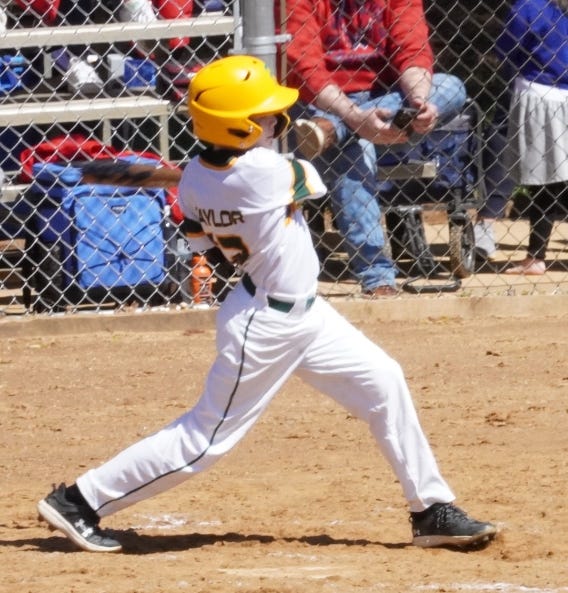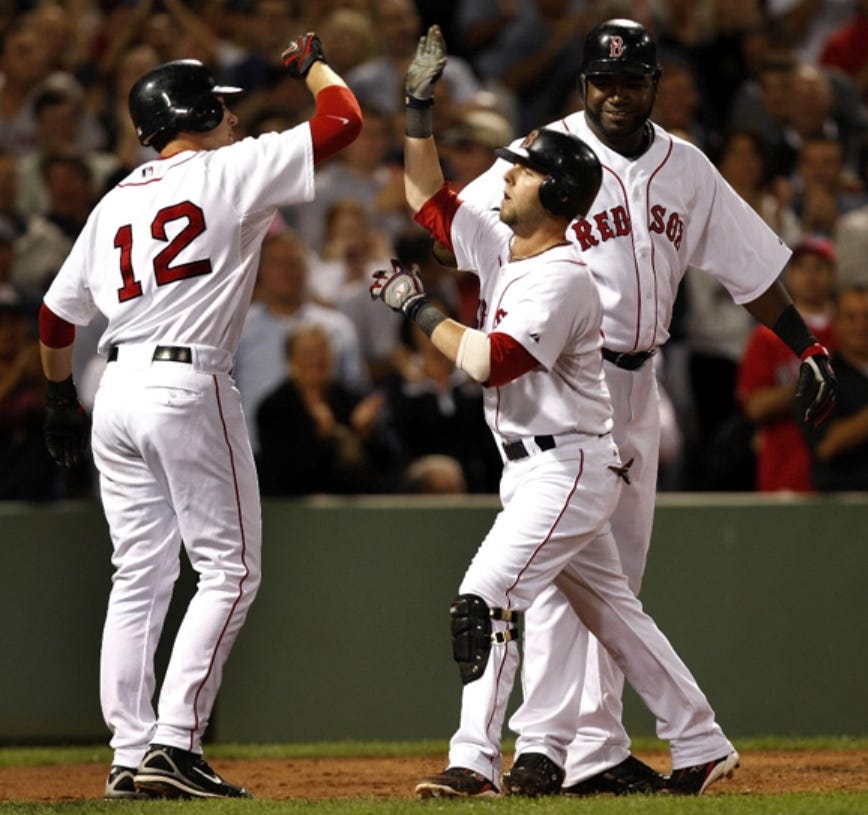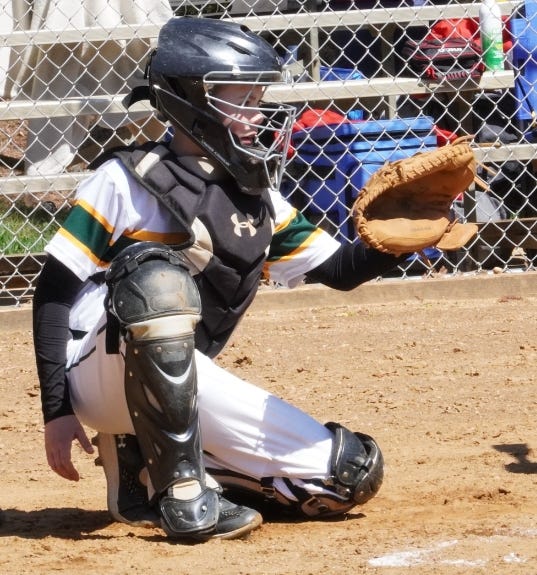My son plays baseball and my daughter’s trying softball. I never played baseball in any organized way when I was a kid, but through my own kids I’ve grown to appreciate the many aspects of baseball that uniquely justify its status as “America’s National Pastime.”
At the local level, baseball coaches are mayors of small communities. They bring kids and parents together around the organizing principle of a game with clear, pre-existing rules, written long ago by the Founders of baseball. But then those same kids go on to free play together off the field under rules they make up themselves, while their parents go on to socialize, share meals, and look out for one another. Volunteer coaches build real, organic communities. (On the other hand, I notice many actual mayors and other public officials use “our community” to describe just about everything that doesn’t actually feel like a community, including bloated, sterile bureaucracies that feel nothing like an organically social neighborhood.) Our baseball community was especially dear during the COVID lockdowns. None of the kids wore masks at games, and we were only reminded of COVID’s existence when we had to wear masks into the 7-Eleven when the coach bought the kids post-game Slurpees.
Beyond creating local communities, baseball itself reflects the principles of America writ large. I recently came across a couple of big thinking philosophers who made that point. One was Jacques Barzun, a French-American historian who had Alexis de Tocqueville’s ability to appreciate America in ways native-born Americans often couldn’t. The other was John Rawls, a Harvard philosophy professor whose book A Theory of Justice first got me seriously interested in political philosophy.
In a 1954 essay titled “On Baseball,” Barzun wrote “Whoever wants to know the heart and mind of America had better learn baseball, the rules and realities of the game. That baseball fitly expresses the powers of the nation’s mind and body is a merit separate from the glory of being the most active, agile, varied, articulate, and brainy of all group games.”
Before we explore that insight, let’s first recognize the role of the British. As Gary Belsky and Neil Fine write in their book On the Origins of Sports: The Early History and Original Rules of Everybody’s Favorite Games:
[O]ne of the earliest known references to “base-ball” appears in a 1744 English publication, A Little Pretty Pocket-Book. Yes, thirty-two years before the signing of the Declaration of Independence, a British poem titled “Base-Ball” featured the lines: “The Ball once struck off / Away flies the Boy / To the next destin’d post / And then Home with Joy.” An accompanying engraving shows three youths engaged in what appears to be “stoolball,” a similar game from southern England that dates to at least the eleventh century and is thought to have been created by milkmaids who used overturned stools as wickets, the precursors to bases. The British developed lots of stick-and-ball games over the centuries, including cricket and rounders.
But just like Americans rejected the inadequate British rules for governing America, Americans rejected the British rules of baseball. And they did it through a process a lot like how the individual American states, with their own way of doing things, nevertheless came to support a federal Constitution that allowed for the application of some uniform rules nationwide.
As Belsky and Fine write:
We now know that forms of baseball were played on farms in New England in the 1700s. By the 1800s, as cities like New York, Philadelphia, and Boston prospered, a professional class emerged that had the opportunity for leisure. Those citizens formed social clubs that often centered on their old-country games … Not surprisingly, the unwritten rules for these games differed from club to club and region to region, which made playing one another difficult … In 1845 Alexander Cartwright, a founder of New York’s Knickerbocker Base Ball Club, put on paper the rules his club followed. Whether these are the first rules of baseball or simply the earliest recorded is hard to say … Today there are more than 120 national governing bodies in the International Baseball Federation. All of them, more or less, play a game that hews to the Knickerbocker rules.
(Even though baseball’s rules became uniform, the game is still a rivalry of geographically-defined districts that mirrors competition among the states under America’s system of federalism. As Barzun writes, “Baseball is … broken up in the rivalries of city-states.” It’s Boston vs. New York, and Philadelphia vs. Pittsburgh ...)
Belsky and Fine present the original Knickerbocker rules for baseball, with commentary:
Note the reference in the 2nd rule to the President of the baseball club’s duty to “appoint an Umpire,” a judge who would independently interpret the rules, recalling the “separation of powers” in our American system of government. I also particularly like the Knickerbocker rules’ repeated reference to baseball as something that was “for exercise,” with its players “assembled for exercise.” With the chances of any kid playing baseball today making the major leagues being extremely low, it’s best for players to understand early on (despite what might be their parents’ wishes) that baseball should be considered primarily a fun way to get exercise, not a route to playing professionally.
Despite recent efforts to move America in the direction of identity politics in which a person becomes defined by their membership in a group, baseball highlights the individual. As Barzun writes:
Once the crack of the bat has sent the ball skimming left of second between the infielder’s legs, six men converge or distend their defense to keep the runner from advancing along the prescribed path. The ball is not the center of interest as in those vulgar predatory games like football, basketball, and polo. Man running is the force to be contained.
John Rawls, writing in a letter about his agreement with another professor’s views on baseball, makes a similar point:
[B]aseball is the only game where scoring is not done with the ball, and this has the remarkable effect of concentrating the excitement of plays at different points of the field at the same time. Will the runner cross the plate before the fielder gets to the ball and throws it to home plate, and so on.
Barzun writes of baseball’s focus on individual initiative, skill, and intelligence based on situational awareness:
Accuracy and speed, the practiced eye and hefty arm, the mind to take in and readjust to the unexpected, the possession of more than one talent and the willingness to work in harness without special orders -- these are the American virtues that shine in baseball. There has never been a good player who was dumb. Beef and bulk and mere endurance count for little, judgment and daring for much … Baseball is a kind of collective chess with arms and legs in full play under sunlight.
And that baseball field chessboard is elegantly designed in a way that challenges players to stretch their abilities to their limits. As Rawls writes, “the diamond was made just the right size, the pitcher’s mound just the right distance from home plate, etc., and this makes possible the marvelous plays, such as the double play. The physical layout of the game is perfectly adjusted to the human skills it is meant to display and to call into graceful exercise.”
The skills highlighted in baseball also summon every part of the human body. As Rawls writes, baseball involves “the arms to throw, the legs to run, and to swing the bat, etc.; per contra soccer where you can’t touch the ball. [Baseball] calls upon speed, accuracy of throw, gifts of sight for batting, shrewdness for pitchers and catchers, etc.”
The apex predators elsewhere in the animal kingdom aren’t complex enough to play baseball. Baseball works so well on the human level because it requires people to make all the parts of their body work well together. Yaneer Bar-yan makes the following comparison in his book Making Things Work:
Comparing these pictures illustrates the combined issues of complexity and scale in two successful organisms. The legs of a wolf are designed for the largest scale action: moving the animal as a whole. The structure of a person gives up some of the ability to run fast. Only two of the four limbs are for moving the entire organism. The arms and hands are designed for finer scale, higher complexity, manipulations. If the environment requires larger scale motion/action the wolf is better suited for that environment. If the environment requires a finer scale higher complexity manipulation, the person is better suited. This figure therefore demonstrates two key ideas: 1) there is a trade-off between complexity and scale, and 2) the success of the organism/organization depends on both complexity and scale.
Baseball manages to do both: it showcases the complexity of human beings on the grand scale of a baseball field.
As long as baseball players execute their role with intelligence, brawn is a secondary consideration. As Rawls writes, baseball “does not give unusual preference or advantage to special physical types, e.g., to tall men as in basketball. All sorts of abilities can find a place somewhere, the tall and the short etc. can enjoy the game together in different positions.” Just about anyone can succeed in baseball (and America) if they apply themselves.
That said, Barzun singles out the catcher as the brains of the team:
The infield is like a steel net held in the hands of the catcher. He is the psychologist and historian for the staff -- or else his signals will give the opposition hits. The value of his headpiece is shown by the ironmongery worn to protect it. The pitcher, on the other hand, is the wayward man of genius, whom others will direct.
Baseball’s highlighting of individual performance is why I tell my son and daughter that whatever the outcome for your team, you only control your own individual performance, and your individual performance is what should matter most to you (even as you root for your team).
Along with highlighting individual skill, the aesthetic of baseball uniforms themselves highlight the American understanding of the dignity of hard work. Barzun again:
[T]he [baseball] team is elegance itself in its striped knee breeches and loose shirts, colored stockings and peaked caps. Except for brief moments of sliding, you can see them all in one eyeful, unlike the muddy hecatombs of football. To watch a football game is to be in prolonged neurotic doubt as to what you’re seeing. It’s more like an emergency happening at a distance than a game.
Barzun also points out the subtle life lessons of baseball: “How excellent … that a foul tip muffed by the catcher gives the batter another chance. It is the recognition of Chance that knows no argument.” On that note, it’s important to teach kids to accept that many things in life (good and bad) are often the result of random chance, and in life as well as baseball, one shouldn’t get upset over something over which you have no control. (Similarly, one shouldn’t take pride in something that happens to benefit you, if what happens was the result of random chance, and not your own individual effort or performance.)
And then there are other aspects of baseball that highlight the need to remain focused until the job is done. Barzun again:
[O]n the other hand, how wise and just that the third strike must not be dropped. This points to the fact that near the end of any struggle life asks for more than is needful in order to clinch success. A victory has to be won, not snatched.
That rule incentivizes remaining focused (and avoiding complacency) all the way to keeping that third strike in the mitt. In the same vein, Rawls point out that the timing rules of baseball emphasize that it’s “not over ‘til it’s over,” and that even in dire situations there’s the opportunity to come back:
[In baseball,] there is the factor of time, the use of which is a central part of any game. Baseball shares with tennis the idea that time never runs out, as it does in basketball and football and soccer. This means that there is always time for the losing side to make a comeback. The last of the ninth inning becomes one of the most potentially exciting parts of the game.
Baseball as a team sport is also uniquely designed for transparency, to help prevent corruption in the game (as we should aspire to prevent corruption in government). As Rawls writes:
all plays of the game are open to view: the spectators and the players can see what is going on. Per contra football where it is hard to know what is happening in the battlefront along the line. Even the [football referees] can’t see it all, so there is lots of cheating etc. And in basketball, it is hard to know when to call a foul. There are close calls in baseball too, but the umps do very well on the whole, and these close calls arise from the marvelous timing built into the game and not from trying to police cheaters etc.
Finally, baseball, like all sports, emphasizes the American ideal of equally applying the rules to everyone, a necessary predicate to the functioning of any pluralistic society. Rawls, in his seminal article titled “Two Concepts of Rules,” uses a baseball analogy to make the point as follows:
If one wants to play a game, one doesn’t treat the rules of the game as guides as to what is best in particular cases. In a game of baseball if a batter were to ask “Can I have four strikes?” it would be assumed that he was asking what the rule was; and if, when told what the rule was, he were to say that he meant that on this occasion he thought it would be best on the whole for him to have four strikes rather than three, this would be most kindly taken as a joke. One might contend that baseball would be a better game if four strikes were allowed instead of three; but one cannot picture the rules as guides to what is best on the whole in particular cases, and question their applicability to particular cases as particular cases.
In that sense, sports today act as a cultural brake on recent tendencies toward identity politics in national party politics in which some want special rules applied to certain people based on their racial or other identity (as long as those identities are part of their own political coalition). Baseball, on the other hand, like all sports, is colorblind.
The tribalism we see manifested in national politics infuses sports as well, of course. As I’ve written previously, sports fans often find themselves booing the referee when they make a call against their favorite team, even when the replay shows the referee clearly got it right. As Belsky and Fine write:
[T]he outsize attention humans in all cultures devote to sports makes sense on a primal level. We are tribal by nature -- genetically programmed to define “us” by “them” -- and few things make that task easier than team jerseys. Sports have long been a source of identity and pride among our species, the gauntlet through which so many of us bond with others, test our abilities, and prove our loyalty.
But the tribalism in sports embodies favoritism toward teams that are defined by the uniform they wear, not by the much more odious distinctions based on race or other immutable characteristics. If only more people could get their tribal tendencies out of their system through sports, they could leave their tribalism out of politics. (And of course, politics should be kept out of baseball and sports generally. After all, most people watch sports to escape politics, not to be bathed in political spectacles.)
Those are just some of the musings on baseball that popped into my head as I played walkup music for the players on my son’s baseball team over the past several years. I doubt any other game would have inspired the same thoughts.
UPDATE: Thanks to the great James Freeman of the Wall Street Journal for mentioning this essay in his “Best of the Web” column!











Paul, Another superb piece out of far left field...lol. Your terminal points are some I have made many times...sports rebind people in ways that are demographically detached: far better than the ridiculous identitarianism that is pervading most anything else. But it's OK, the current administration is working hard to ruin sports, too (at least women's sports) by making them an identitarian morass as well. Really tragic.